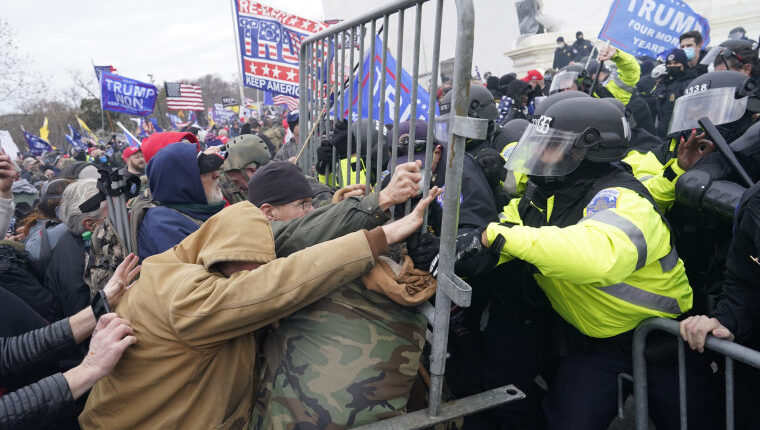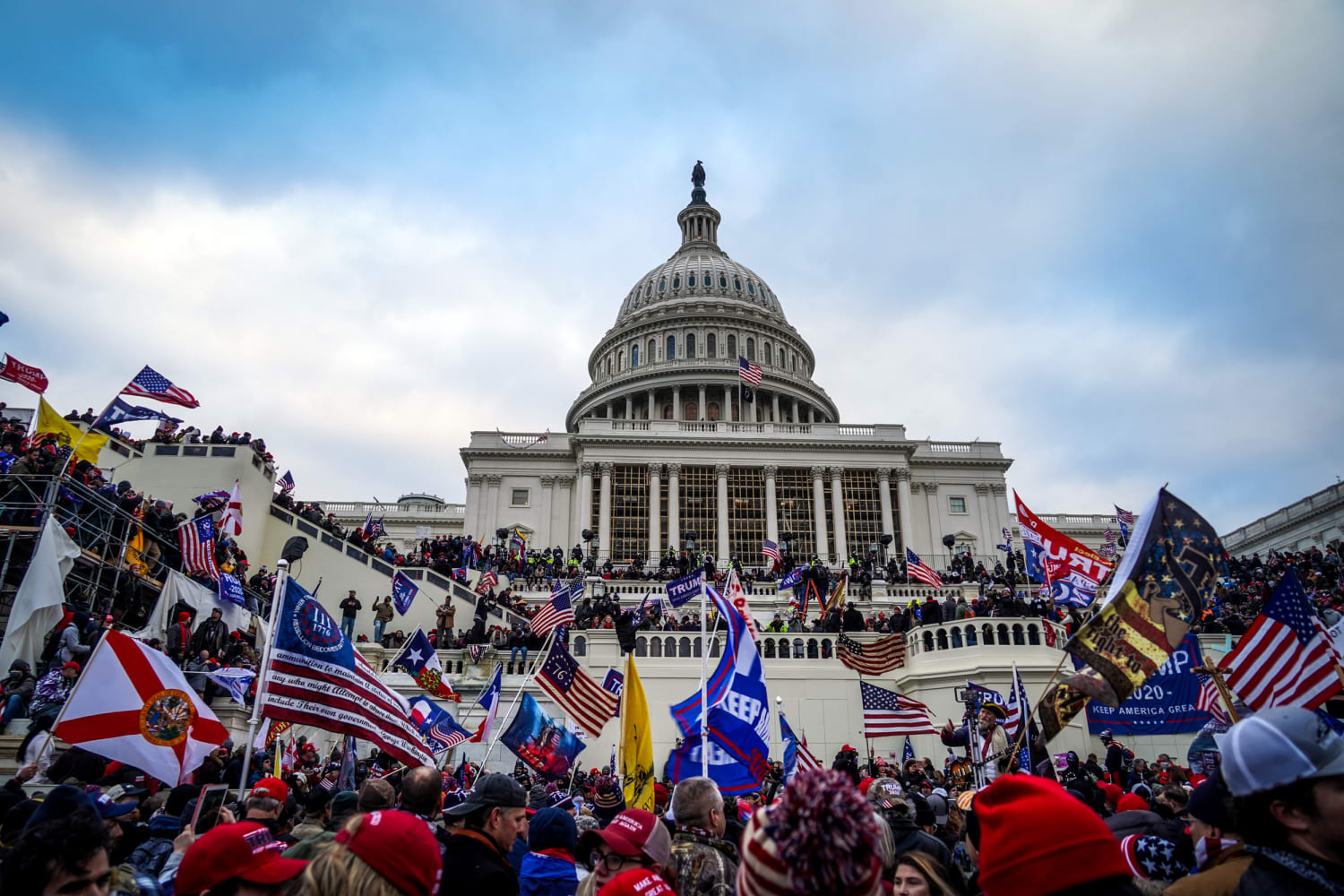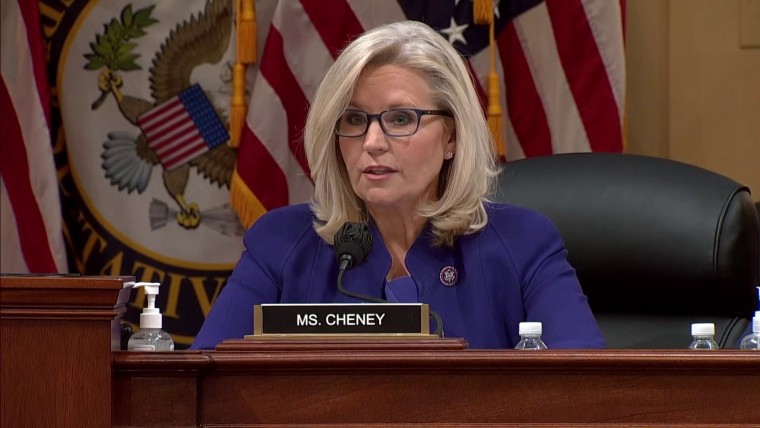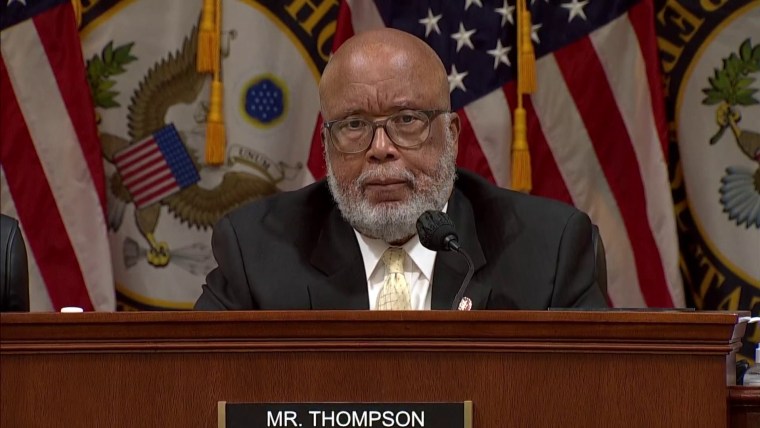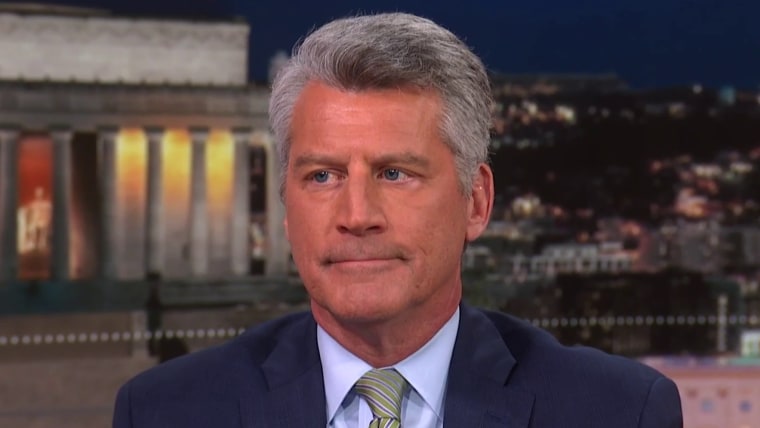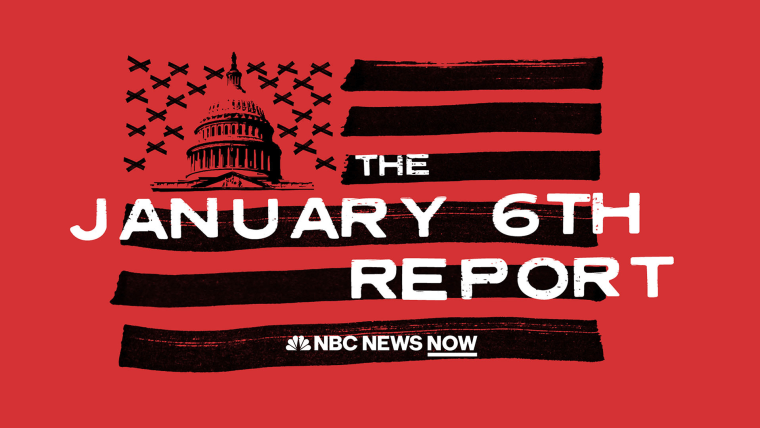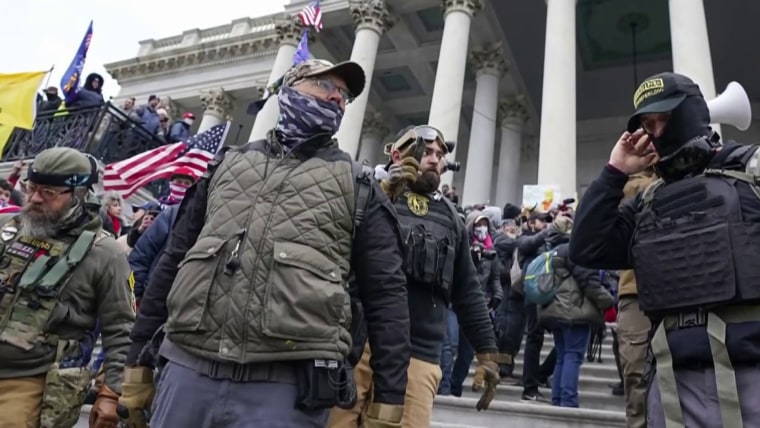The House Jan. 6 committee concluded that the FBI and other federal security agencies could have prevented a violent mob from overrunning the Capitol had they acted on the large volume of intelligence collected beforehand, the chief investigator told NBC News in an exclusive interview — a judgment the committee left out of its televised hearings and final report.
Former federal prosecutor Tim Heaphy, the committee’s chief investigative counsel, said that while he endorses the panel’s main finding that then-President Donald Trump sparked the riot by urging protesters to go to the Capitol, his probe documented how federal law enforcement failures contributed to the debacle.
Trump “was the proximate cause. But for his words, and deeds, it wouldn’t have happened,” said Heaphy, who led many of the key witness interviews conducted by the committee. “That said, what happened at the Capitol was also affected by law enforcement failures to operationalize the ample intelligence that was present before Jan. 6, about the threats of violence.”
He added, “Law enforcement had a very direct role in contributing to the security failures that led to the violence.”
For more on this story, tune in to NBC Nightly News with Lester Holt tonight at 6:30 p.m. ET/5:30 p.m. CT or check your local listings.
Committee investigators found that the Capitol was inadequately defended on Jan. 6 not because of an intelligence failure, Heaphy said, but because of a failure to act on intelligence showing that extremists intended to come to Washington and use violence to stop Congress from certifying Joe Biden’s election victory.
“There was a lot of advance intelligence about law enforcement, about carrying weapons, about the vulnerability of the Capitol,” he said. “The intel in advance was pretty specific, and it was enough, in our view, for law enforcement to have done a better job.”
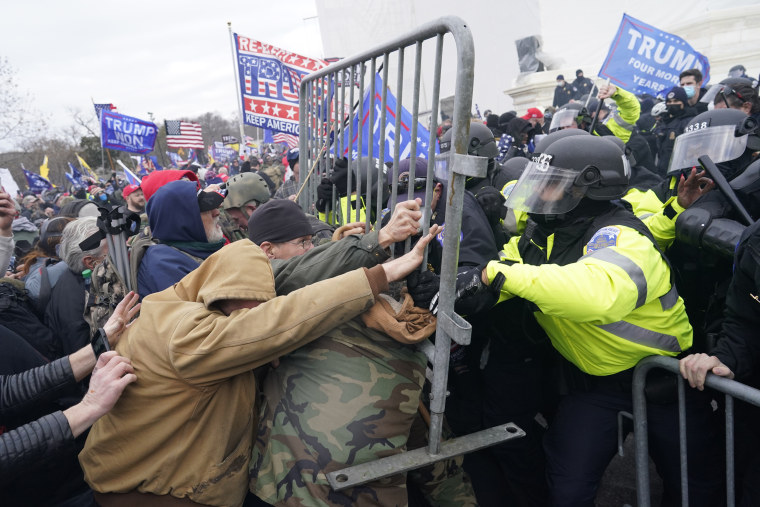
While many lawmakers and outside experts have reached that conclusion, it hasn’t been previously reported that the most comprehensive investigation into the Capitol riot did so, too. It’s also notable that the lawmakers on the committee chose to downplay — and in some cases contradict — that finding.
Heaphy has not previously spoken publicly about the findings of the Blue Team, the group of committee investigators who spent more than a year reviewing the performance of the FBI, the Department of Homeland Security, the Secret Service, the Capitol Police, the Department of Defense and Washington’s police with regard to the Jan. 6 attack.
The Blue Team was led by senior investigative counsel Soumya Dayananda, who once helped prosecute Joaquin “El Chapo” Guzman. She declined to comment.
The team’s findings were not presented in any of the committee’s televised hearings. An abbreviated version, stripped of details and analytical judgments, was included in an appendix to the written report. But the report said that, ultimately, law enforcement could not have anticipated what Trump would do and therefore could not be blamed.
Heaphy offered a somewhat different view, saying investigators found that both Trump’s actions and law enforcement failures played a significant role.
Heaphy said investigators also found:
- The Capitol Police failed to deploy enough force to defend the building, but the FBI and DHS, the federal agencies charged with collecting intelligence about domestic extremists, didn’t do enough to sound the alarm about the threat.
- The FBI and DHS were too cautious about exploiting so-called “open source” intelligence gleaned from social media out of misplaced concern about free speech violations.
- The FBI and DHS made a crucial error by not publishing a Joint Intelligence Bulletin about the threats they were seeing, which might have prompted a more robust defense of the Capitol.
- There was confusion about which federal agency was in charge, hampering the response once the Capitol was breached.
Heaphy said he agrees with what Washington, D.C.’s National Guard commander, William Walker, told the committee: The response would have been much different, before and during the attack, “if these protesters were Black and brown.”
Heaphy also played a key role in the committee’s investigation of Trump and the decision to recommend the Justice Department charge Trump with crimes.
In a forward to the final committee report, Chairman Bennie Thompson, D-Miss., wrote that “the shortfall of communications, intelligence and law enforcement around January 6th was much less about what they did or did not know” than what they could not know — that the president would “incit(e) a mob to march on the Capitol and impede the work of Congress.”
He added, “Whatever weaknesses existed in the policies, procedures, or institutions, they were not to blame for what happened on that day.”
Asked about what Thompson wrote, Heaphy said, “It is certainly correct to say law enforcement could not have expected the president of the United States to incite violence directly like he did. There’s no question that this was relatively unprecedented … That said, there were plenty of indications that there could be violence, and law enforcement could have and should have done a better job of anticipating that.”
Thompson did not respond to a request for comment. Former Rep. Liz Cheney, R-Wyo., the committee vice chairman, had no comment through a spokesman. People familiar with the committee’s inner workings told NBC News that the findings about intelligence and security shortcomings were left out of the public hearings and downplayed in the report because committee members wanted to keep the focus on Trump and avoid giving his supporters a talking point. Also given short shrift were the findings of the Purple Team, which examined the role of social media and didn’t even make the report’s appendices.
Asked whether he wished the committee had a public hearing about security shortcomings, Heaphy declined to discuss internal deliberations. He pointed out that the committee’s move to make public its interview transcripts put a lot of evidence about law enforcement failures on the public record.
The committee posted interview transcripts and supporting materials on a website, but wading through them to draw conclusions will be a laborious task for academics and journalists, let alone members of the public.
‘Please, please take this tip seriously’
Heaphy said it was crucial for the public to understand not only Trump’s role, but why the government was unable to defend the seat of American democracy from a mob.
“When you make mistakes, ideally, you’ll learn from them,” he said. “And this was a mistake.”
He said committee investigators reviewed numerous examples of compelling intelligence that appeared to have been downplayed or ignored. Much of the material has already become public, because much of it was posted publicly in the first place. Once researchers began to look for it after the riot, it wasn’t hard to find.
The committee found that 10 days before Jan. 6, the FBI created a unique tag within its Guardian threat tracking system to cover intelligence about possible threats to the Congressional electoral vote count that day. The code was “CERTUNREST.”
One of the tips entered in Guardian on Dec. 27 came from a person who was reading traffic on a website called the Donald.win, a hive of Jan. 6 rhetoric.
“They think that they will have a large enough group to march into DC armed and will outnumber the police so they can’t be stopped,” the tipster wrote. “They believe that since the election was ‘stolen’ that it’s their constitutional right to overtake the government and during this coup no US laws apply … Their plan is to literally kill people. Please please take this tip seriously and investigate further.”
Asked on the web form to describe what kind of attack was being reported, the tipster wrote: “Attempted coup/terrorist attack on Jan 6th.”
In another example, as NBC News first reported in 2021, the New York Police Department sent both the Secret Service and the Capitol Police a compilation of social media posts about threats to the Capitol from the SITE intelligence group. The intelligence report was later made public.
Protesters should “start marching into the chambers,” one poster wrote.
“[T]here is not enough cops in DC to stop what is coming,” wrote another.
“[B]e already in place when Congress tries to get to their meeting,” said another. “[M]ake sure they know who to fear.’”
People familiar with the committee’s work told NBC News that investigators found the only agency that mobilized in anticipation of violence on Jan. 6 was Washington, D.C.’s Metropolitan Police Department.
Almost 900 D.C. police officers responded directly to the U.S. Capitol during the attack, followed by 400 officers from neighboring police forces that D.C. police had asked to be pre-positioned to help.
By contrast, the committee investigators found that federal law enforcement agencies were not postured to respond immediately to the Capitol and did not deploy a large response — about 260 officers. That included 10 from the U.S. Park Police, 24 from DHS, 35 from the FBI, 35 from the Secret Service and 86 from the U.S. Marshals. The Bureau of Alcohol Tobacco and Firearms deployed 70 people largely to deal with pipe bombs planted at Republican and Democratic headquarters.
Agencies respond
Federal agencies have responded differently to the criticism. The FBI has forcefully defended itself, suggesting it did everything it could. The bureau also said last year, however, that it has “increased our focus on swift information sharing with all our state, local, tribal, and territorial law enforcement partners” and had “improved automated systems established to assist investigators and analysts in all of our 56 field offices throughout the investigative process.”
Current and former FBI officials told NBC News the bureau has learned lessons from the riot. During Biden’s January 2021 inauguration, for example, the FBI stepped up security preparations and sent more senior officials to oversee security preparations, the officials say.
In testimony to the committee, Jennifer Moore, the top FBI intelligence analyst in the Washington, D.C., field office, pushed back on the idea that an FBI bulletin about threats to the Capitol would have made a difference.
“It wouldn’t have changed how we postured ourselves,” Moore said. “Regardless of that piece of paper that said we got a lot of social media, there’s a lot of people coming to D.C., looks like they might want to do some violence … I would have had my assets exactly posed exactly as they were.”
DHS, by contrast, agreed with a March report by its inspector general that concluded its intelligence division “was unable to provide its many state, local and Federal partners with timely, actionable, and predictive intelligence prior to the U.S. Capitol breach on January 6, 2021” despite ample threat information.
DHS officials said they have since overhauled their collection and assessment of open-source information. The threshold for reporting threats has been lowered and the intelligence now reaches more senior officials, they said.
The Capitol Police, under new leadership, has vowed to improve its approach to both intelligence analysis and critical incident response.
In a statement, the FBI said that in the lead-up to Jan. 6, the bureau “was actively engaged in gathering intelligence, disrupting travel, and sharing information with our partners. The FBI specifically warned state, local, and federal partners about the potential for violence at the January 6 events.”
The FBI added: “Since Jan. 6, 2021, the FBI has continuously reviewed our processes, procedures, and policies in order to assess lessons learned and make improvements in communication and in the collection, analysis, and sharing of information.”
The FBI’s position appears to have evolved since the days after Jan. 6, when the head of its Washington field office told reporters there was no intelligence that the protesters would be anything but peaceful. When reams of social media posts began to emerge showing Trump supporters vowing violence, the bureau began to say the intelligence was not specific and credible enough.
Heaphy said that suggests a problem with the FBI approaching domestic terror as primarily a law enforcement matter, rather than also an intelligence collection target.
“Even if individual tips don’t, by themselves, provide enough specific and credible information to take an investigative step, take a step back. If there are 50 such tips, aggregate intelligence suggests, ‘Hey, maybe we have a problem,’” Heaphy said. “That was the failure here.”
For example, the FBI, DHS, Secret Service and Capitol Police were all aware of intelligence suggesting a huge uptick in traffic on a website with information about the Capitol’s tunnels.
The intelligence included social media posts such as “this is where we infiltrate,” and “when our elected representatives try and flee, they will emerge out of these end points.”
Moore, the FBI intel official, told the committee the bureau concluded there was nothing it could do in response.
“So talking about the tunnels, there’s nothing illegal about it,” said Moore. “[W]ithout it being very specific violence towards the tunnels, we can’t take action or do that next step.”
Moore also explained how the FBI views its constraints when it comes to social media.
“People’s First Amendment rights, obviously, are protected. We cannot … just troll the internet looking for things that’s out there,” she said. “It would have to be with such specificity and such planning and such detail that we would be able to open a case.”
Heaphy said the bureau should do more, short of a criminal investigation.
“To me, it is not violating anybody’s rights to reach out to them based on something that they post publicly,” he said. “Sometimes a knock on the door and an inquiry as to intention can have a deterrent effect. The bureau doesn’t, in my view, do that enough. They didn’t do that enough before Jan. 6.”
Law enforcement officials told NBC News they are under constant pressure from Congress and civil liberties groups to be conservative about exploiting public social media for intelligence purposes. They operate under strict guidelines that stem from the scandals of the 1970s, when the FBI was caught spying on Americans.
But before Jan. 6, finding threats on social media didn’t require intrusion. They were plentiful.
One set of communications reviewed by the committee, but not recounted in the final report, showed that just after noon on Jan. 5, 2021, Valerie Hasberry, security chief for the architect of the Capitol, forwarded a Dataminr alert to the Capitol Police incident command.
It showed a tweet calling on thousands to “go to Washington Jan 6 and help storm the Capital,” adding “we will storm the government buildings, kill cops, kill security guards, kill federal employees and agents.”
“[M]y gut feel, my instinct is, again, based on everything you’re hearing, it wasn’t beyond the realm of possibility that this was someone who actually planned on doing harm,” Hasberry told the committee.
The response came 58 minutes later, she told the committee: “There is no talk about any credible threats or storming the Capitol.”
Source: | This article originally belongs to Nbcnews.com
